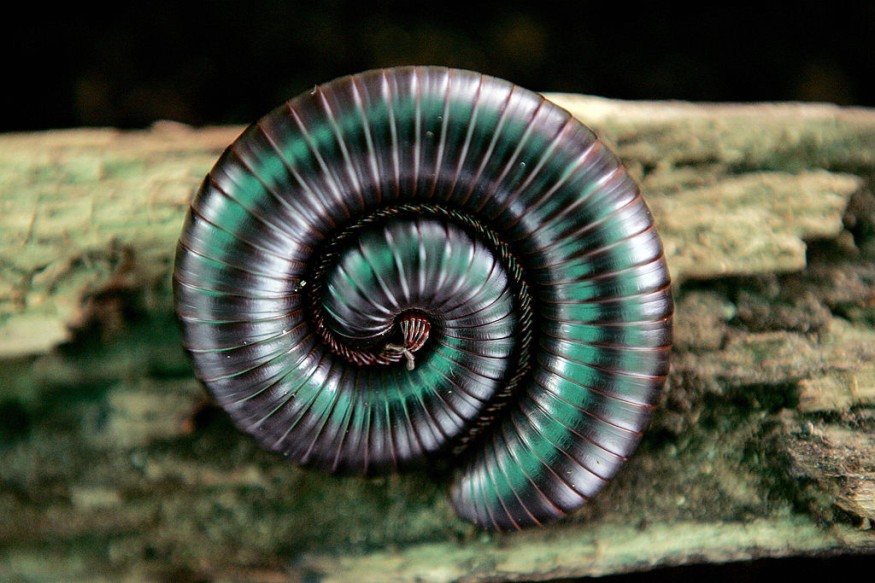Arthropleura is a genus of an extinct giant millipede that lived more than 300 million years ago during the Carboniferous Period. A recent discovery of a fossil on an English beach revealed that it could have grown as big as a car, bigger than previously believed.
Scientists said that it could be the world's largest arthropod that ever lived. New Scientist reported that a fossilized fragment of the giant millipede was found in Northumberland that measures 2.5 feet (75 centimeters) long and 1.8 feet (55 cm) wide, which means that it is estimated to be around 8.5 feet (2.6 meters) when alive.

A "Very Lucky" Fossil Discovery
Geologist Neil Davies from the University of Cambridge told Live Science that the fossil discovery was a "very lucky" one because the area where they found it was not a common site to find fossils. He said that the block which contains the fossilized exoskeleton fell from the cliff and cracked in the right place and exposed the fossil.
Researchers from the University of Cambridge were astonished to find the exceptionally well-preserved exoskeleton of millipede because molted exoskeletons do not usually fossilize well since they quickly break down.
Davies and his colleagues think it seems to have been filled with sand as soon as it molted. He added that the exoskeleton likely fell into a small river and quickly got entombed in other sediments since it was found in a fossilized river channel.
Before this discovery, only two Arthropleura fossils that have been discovered, one was found in Germany. Davies said that the recently discovered one is the oldest and largest exoskeleton of ancient millipede ever discovered. Researchers speculated before that Arthropleura could potentially grow even bigger than a dog. The new discovery was the first direct evidence that proved the hypothesis.
Scientists who have been studying the giant invertebrates have relied on fossilized footprints and trackways they left behind that were previously discovered in Europe and North America.
ALSO READ: Mastodon Tooth Found in Michigan by a 6-Year-Old Boy Who Thought It Was From a Dragon
Monstrous Creatures From the Carboniferous Period
Arthropleura lived between 359 million to 299 million years ago during the Carboniferous Period, when Earth was much more oxygen-rich than today. The National History Museum reported that the Earth's atmosphere during the Carboniferous period had 26% to 30% oxygen compared to today's 21%.
That era was also known for giant arthropods, such as the Meganeura that looked like bird-sized dragonflies and the Arthropleura. Scientists suggested that the higher oxygen levels at that time have allowed insects to grow larger, noting that insects use their trachea to deliver oxygen to tissues of the body instead of using blood that many animal species use today.
This system helped oxygen move relatively slow inside the bodies of the insects that influenced their growth. That means if they lived today, they would not receive enough oxygen to survive.
On the other hand, some scientists are contesting this theory and instead believe that insects at that time grew larger to avoid the toxic effects of oxygen, or that the lack of flying predators have allowed them to grow bigger than their sizes today.
Since most evidence suggests these insects lived in the latter part of the Carboniferous Period, most scientists believe that their size has something to do with the oxygen levels. But the recent discovery was found in a rock that dates back to a time when oxygen levels were only slightly higher today, which again questions this idea.
RELATED ARTICLE : Remains of Mammoths Uncovered at a Site Where Cave-Dwellers Dined 215,000 Years Ago
Check out more news and information on Archaeology in Science Times.











